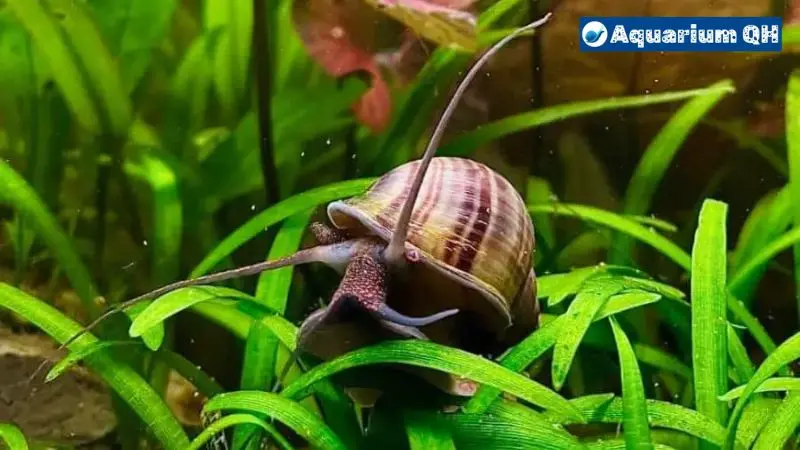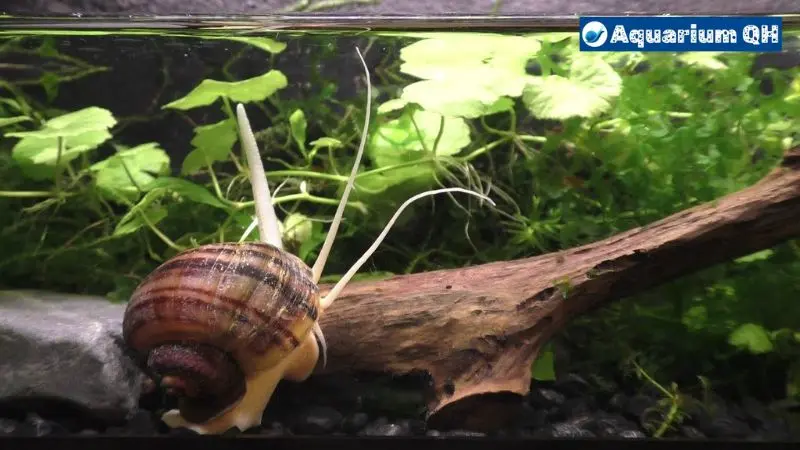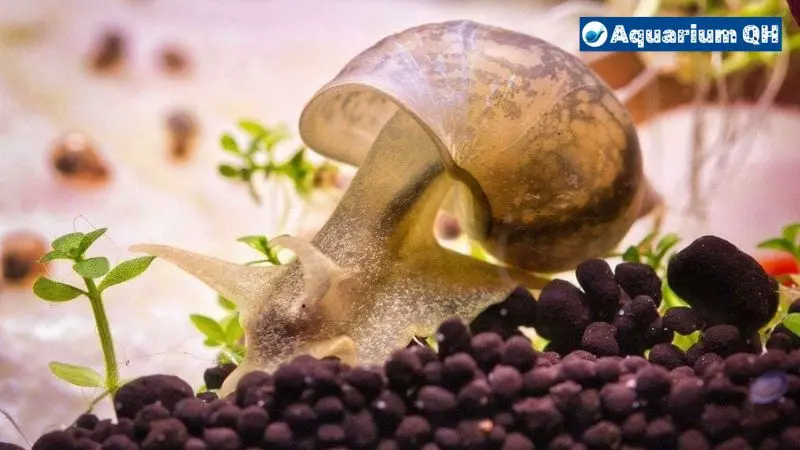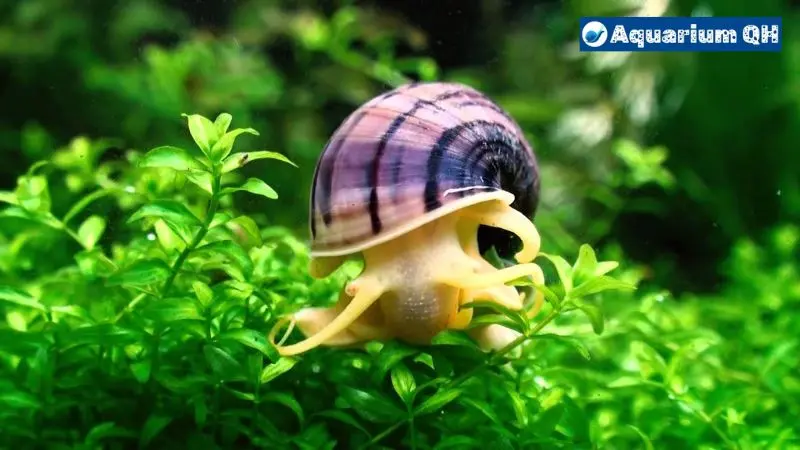Mystery snails, also known as Pomacea diffusa, are fascinating creatures often kept in home aquariums due to their unique appearance and interesting behavior. As an owner, it’s crucial to provide them with an environment that mimics their natural habitat to ensure their health and well-being. Aquarium QH will explore the best water temp for mystery snails.
Introduction to Mystery Snails

Before delving into the specifics of water temperature, let’s first understand what mystery snails are. These freshwater snails are native to South America and are widely appreciated for their striking colors and peaceful nature. They are popular choices for aquarium enthusiasts and are relatively easy to care for.
The Importance of Water Temperature for Mystery Snails
Maintaining the correct water temperature is vital for the overall health and longevity of mystery snails. These creatures are ectothermic, meaning they rely on external sources to regulate their body temperature. Fluctuations in water temperature can have significant impacts on their metabolism, behavior, and overall well-being.
Understanding the Natural Habitat
In the wild, mystery snails inhabit slow-moving rivers, ponds, and marshes with warm and stable water conditions. Therefore, replicating these conditions in captivity is essential for their survival.
Ideal Temperature Range
The ideal water temperature for mystery snails typically ranges between 75°F to 82°F (24°C to 28°C). This temperature range ensures that the snails remain active, healthy, and stress-free.
Effects of Incorrect Temperature
Exposure to temperatures outside the ideal range can have adverse effects on mystery snails. Water that is too cold may lead to sluggishness, decreased activity, and even hibernation-like states. Conversely, water that is too warm can increase metabolism, leading to excessive growth and potential health issues.
How to Measure Water Temperature
Accurately monitoring water temperature is crucial for maintaining optimal conditions for mystery snails. Several methods can be employed to measure temperature effectively, including digital thermometers, floating thermometers, and strip thermometers.
Methods to Control Water Temperature

Maintaining a stable water temperature requires careful attention and possibly intervention, especially in fluctuating climates or seasons.
Adjusting Room Temperature
One method to regulate water temperature is by adjusting the ambient temperature of the room where the aquarium is located. Keeping the room within the desired temperature range can help stabilize the water temperature in the tank.
Using Aquarium Heaters
Aquarium heaters are essential equipment for maintaining consistent water temperature, especially in colder environments. They come in various wattages and types, including submersible and preset heaters, allowing for precise temperature control.
Insulating the Tank
Insulating the aquarium can help retain heat and stabilize water temperature. This can be achieved by using tank covers, insulating materials around the tank, or positioning the tank away from drafts.
Temperature Fluctuations and Their Impact

Even minor fluctuations in water temperature can stress mystery snails and compromise their health. Sudden changes in temperature, especially drastic drops, can weaken their immune systems and make them susceptible to diseases.
Monitoring Water Temperature
Regular monitoring of water temperature is essential to ensure that it remains within the optimal range for mystery snails. This can be done through daily checks using thermometers placed inside the tank.
Regular Checks
Dedicating time for daily checks allows owners to identify any fluctuations promptly and take necessary actions to stabilize the temperature.
Using Thermometers
Investing in reliable thermometers designed specifically for aquarium use is crucial for accurate temperature readings. Digital thermometers are particularly convenient as they provide instant and precise measurements.
Seasonal Changes and Adjustments
Seasonal changes can affect room temperature and, consequently, the water temperature in the tank. It’s essential to anticipate these fluctuations and make necessary adjustments to maintain optimal conditions for the snails.
Tips for Maintaining Optimal Water Temperature
- Avoid placing the tank near sources of heat or cold drafts.
- Use a reliable aquarium heater with a thermostat for precise temperature control.
- Monitor water temperature regularly and make adjustments as needed.
- Provide adequate insulation to prevent heat loss from the tank.
Common Mistakes in Maintaining Water Temperature
- Neglecting to monitor water temperature regularly.
- Using inadequate or malfunctioning equipment for heating.
- Overlooking seasonal changes and their impact on room temperature.
Conclusion
Ensuring the proper water temperature for mystery snails is crucial for their health and well-being. By understanding their natural habitat and employing appropriate temperature control measures, owners can create a conducive environment that promotes their vitality and longevity.
-
FAQs (Frequently Asked Questions)
- What happens if the water temperature is too low for mystery snails? Low water temperature can lead to sluggishness and decreased activity in mystery snails. In extreme cases, it may induce hibernation-like states, impacting their overall health.
- Can high water temperatures be harmful to mystery snails? Yes, excessively warm water can accelerate metabolism in mystery snails, potentially leading to health issues and reduced lifespan.
- How often should I check the water temperature in my snail tank? It’s recommended to check the water temperature daily to ensure it remains within the optimal range for mystery snails.
- Do mystery snails require a specific type of thermometer for accurate temperature readings? While any reliable aquarium thermometer can be used, digital thermometers are often preferred for their precision and ease of use.
- What should I do if I notice sudden fluctuations in water temperature? If you observe sudden temperature changes, take immediate action to stabilize the temperature by adjusting room temperature, using heaters, or insulating the tank.




